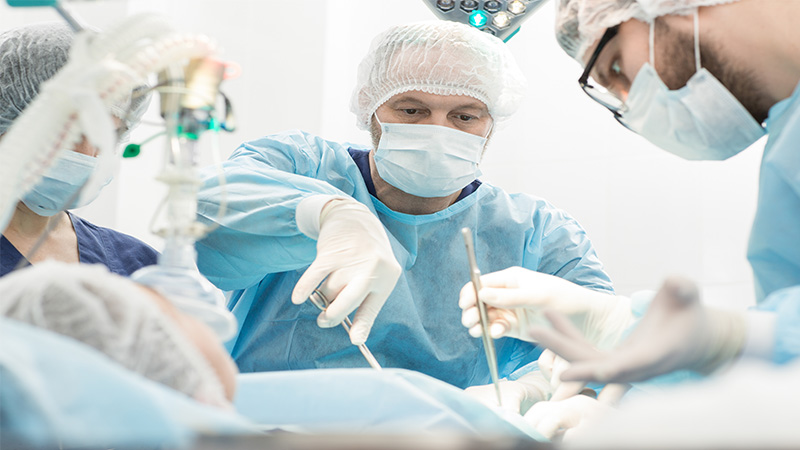Setting the standard in tissue engineering
Tissue engineering offers the promise of off-the-shelf products containing living human cells. Organogenesis Inc. has turned this science-fiction-like concept into a reality. Their Apligraf® is the first and only product with living human cells that has proven its efficacy in practice. Vaisala’s measurement instruments are used in their very demanding production environment.
Organogenesis Inc., a company of 235 employees located in Canton, Massachusetts, USA, designs, develops and manufactures products containing living cells and natural connective tissues. It has focused in particular on living tissue replacements, cell-based, organ-assist devices and other products of tissue engineering. Its lead product, Apligraf®, is currently marketed in the USA and Canada. Other products in the research pipeline include the Vitrix™ living soft tissue replacement, a bioartificial liver and a vascular graft. Vaisala has worked with Organogenesis since 1992 – long enough to have acquired valuable experience in supplying measurement instruments for these demanding applications.
Apligraf® for major medical needs
Apligraf® is a living, all-natural product which, like the human skin, has both an upper epidermal and a lower dermal layer. It contains living human skin cells – epidermal keratinocytes and derma fibroblast.
Apligraf® is the only manufactured product containing living human cells to have gained FDA PMA (USA) marketing approval (Food and Drug Administration / Pharmaceutical Manufacturers Association). It was launched in July 2000 for use in the treatment of diabetic foot ulcers, which affect up to 800,000 people in the US and lead to over 50,000 amputations per year. These amputations have been necessitated because standard treatments of diabetic ulcers do not always heal the wounds fast enough to avoid life-threatening infection. Foot ulcers are a leading cause of hospitalization among diabetics. Apligraf® has been shown to heal more of these wounds, and faster. Apligraf® has also been marketed for venous leg ulcers, another widely-occurring chronic wound, which can take six months or longer to heal with standard care. Additional markets for Apligraf® are anticipated. For example, a pivotal trial is underway to assess whether the use of Apligraf® reduces scarring in post skin cancer surgery. Other potential applications include skin surgery, treatment of burns, skin disruptive diseases and other types of chronic wounds, such as pressure sores.
Vascular graft
The muscle of the heart is kept alive by small arteries on its surface. However, these coronary arteries can become blocked by atherosclerotic plaque, necessitating a by-pass grafting procedure to restore blood flow. Although this procedure is well established, its utilization is dependent on the availability of appropriate graft material. Apligraf® is thus being developed for coronary artery bypass procedures, of which about 350,000 are performed annually in the US, often requiring multiple grafts.
While the goal is to implant a cellularized blood vessel in the body, the inclusion of cells in the product is problematic. Use of the patient’s own cells would compromise product availability upon demand – important for heart surgery – while use of non-patient cells would elicit rejection. Thus, the vascular graft prototype being developed by Organogenesis does not include cells. Instead, it is designed to become populated with the patient’s own cells after implantation.
Liver assist device
Currently, approximately 150,000 people are hospitalized with liver disease and 43,000 people die from it each year in the US. These figures are expected to increase. One reason is that transplantation - the only effective means of treating liver failure – is not an option for many patients, for various reasons. A key research goal, therefore, is to find ways of assisting liver functions until transplantation becomes possible, or instead of it. Organogenesis believes that the key to an effective liver assist device is to provide healthy, highly functional liver cells. The Organogenesis liver assist device is currently undergoing extensive research.

Cooperation with Vaisala since 1992
To be successful, tissue engineering requires complete control over each stage of production. The conditions in environmental chambers and incubators must be precisely controlled and optimized.
Thus, the demands placed on the instruments that control these environments are extremely high. In addition to measuring accurately, they should be stable, totally reliable, and easy to install, use and maintain. Accurate humidity control is essential, for example. For this reason, Organogenesis has purchased Vaisala’s microprocessor-based HMP233 Humidity, Dewpoint and Temperature Transmitters, which can be used directly in the processes in confined places. According to Mr. Sammy Mannai, Validation Engineer at Organogenesis, the transmitters are used in both humid and dry environments, in both high and low temperatures. The monitoring and calibration of the process occurs over a period of time. Mr. Mannai also points out that the transmitters are capable of constant monitoring through the 0-5Vdc and 4-20mA retransmit options. The HMP233 transmitters are also used to create calibration standards for the HVAC system.
Organogenesis also uses Vaisala’s humidity calibrator for calibrating other humidity instrumentation. To ensure the accuracy of humidity measurement instruments, it is very important that the functioning of even a very stable instrument is checked against a reference from time to time. Recently, Organogenesis bought a GMT220 Series Carbon Dioxide Transmitter for their incubators. The GMT220 is designed to measure carbon dioxide in harsh and humid environments. Both the HMP230 and GMT220 Series Transmitters have dust and waterproof housings in accordance with IP65 (NEMA4) specifications. This gives them durability in demanding environments and also facilitates the cleaning of the chambers. Organogenesis selected Vaisala’s measurement products due to their good reputation and the excellent results achieved. Other Organogenesis representatives emphasize the reliability and user-friendliness of Vaisala’s products. Mr. Mannai stresses that accuracy and stability are the two key factors when using a standard as a reference, and that the HMP233 units provide these two factors. He points out that the units have demonstrated excellent and consistent monitoring and reliability. Moreover, they have maintained a very stable calibration history.
The article was originally published in Vaisala News 157/2001.
The GMP252 replaces the following discontinued products: GMM222, GMP222 and GMT222. Please note that spare parts for the GMP222 probe are still available and can be purchased in the Vaisala online store. The GMP252 replaces the following discontinued products: GMM222, GMP222 and GMT222. Please note that spare parts for the GMP222 probe are still available and can be purchased in the Vaisala online store.
HMT330 has replaced HMP233.

